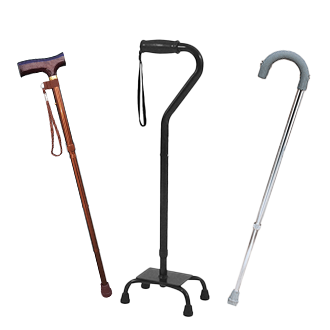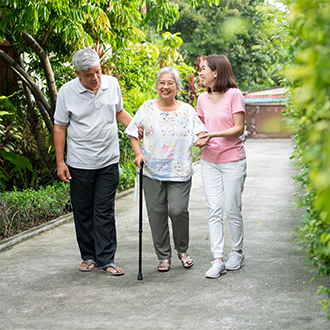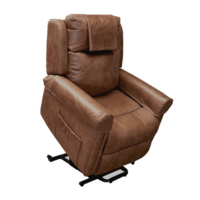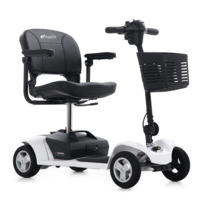Guide To Choosing and Using a Walking Stick
Slips and falls are one of the leading causes of hospitalisations for people aged 65 and over. Using a walking stick can help to prevent falls by improving balance and stability when walking. They can also make it easier for people who have experienced an injury or illness to move around.
While walking sticks can be helpful, there are a few elements to consider when choosing the right one. The different types of walking sticks, handles and height all need to be factored in. Proper technique is also important, as improper use can lead to instability, pain or an increased risk of a fall.
Choosing the right walking stick
Understanding your own needs and how you’ll use your walking stick is essential to find the right one for you. Your first step should be to speak with a physical therapist or GP. They’ll be able to advise on the type of walking stick to look for, as well as give you guidance on using it.
There are a range of different walking sticks available to suit different needs.
Crook handle – a basic style of walking stick featuring a curved handle on a straight shaft.
T handle – this is a straight style walking stick with a handle that sits horizontally to the ground. Often has a slight contour for easy grip.
Swan neck – features a curve or bend just below the handle. This allows the user’s weight to be centered more evenly over the shaft for better stability.
Palm grip – specially designed for people with arthritis or poor grip. The flat handle design disperses pressure evenly across the palm of the hand.
Quad base – this walking stick has four separate feet coming off the central shaft, instead of just one. It offers improved stability and support, but can be more difficult to use. Can stand on its own without having to be leaned against anything when not in use.
Foldable walking stick – similar to the standard T-style walking stick, however features a foldable frame that can be stored in a small bag when not in use. Great for travelling or intermittent use when out and about.
Using your walking stick
Adjust to the right height
Unless you’ve bought a custom walking stick, you’ll have to adjust the height before you use it. This is best done with assistance from someone else so they can check the measurements against your body.
Wearing your normal shoes, place the base of the walking stick about 20cm away from the side of your foot. Allow your arms to drop down naturally by your sides, with a natural bend at the elbow. The top of the walking stick should sit at wrist height. If needed, adjust the length of the shaft until you find the right position.
When using the walking stick, your arm should maintain a slight bend in it. Your back should be straight and your shoulders relaxed. If the position feels awkward or uncomfortable, double check the height of your walking stick or speak with your physiotherapist or occupational therapist about walking stick technique.
Position it on your stronger side
To use your walking stick, you’ll want to hold it on the opposite side to your weakest leg. A common mistake is for people to position the walking stick on the weaker or affected side of their body. But, as we usually walk by swinging our opposite arm to the leg stepping forward, doing this means you’ll lean heavily on your affected side.
Holding the walking stick on the opposite side to the weakest leg maintains the regular walking pattern, helping with balance and supporting the weaker leg as the weight goes onto it as you step through with your good leg.
Practice walking with the right technique
Holding the handle, pick up your walking stick and the affected (opposite) leg at the same time. As you step forward, your stronger leg supports the weight of your body. Place the foot and the walking stick down together. The tip of the walking stick shouldn’t extend out further than your natural step.
When using a quad base walking stick, you’ll make three separate movements.
-
Extend the stick an arm’s length away from your body. Be sure all four legs of the quad cane make contact with the floor to prevent tipping.
-
Gently press down into the handle of the quad cane with your hand to help with stability. Step forward with the weak leg.
-
Advance your other leg just slightly past the first foot.
Going up and down stairs
When ascending stairs, step up on your stronger or less affected leg first. After transferring your weight forward, pick up the affected leg and the walking stick at the same time and move onto the same step. Take it one step at a time and hold onto the railing with your other hand for extra support.
Coming down stairs, you’ll step down with the affected leg and walking stick first followed by the stronger or less affected side. Again, take it one step at a time and hold onto the railing.
Using a walking stick safely
Avoid carrying heavy objects when using a walking stick, such as an oversized handbag or heavy shopping bag. As well as putting extra pressure on your affected side, the uneven weight can throw you off balance. You can use a lightweight cross-body bag or backpack to carry your personal items.
A wrist strap is a handy feature for a walking stick, allowing you to use your hands freely when needed without the walking stick falling to the ground. Some walking sticks come with a wrist strap, or you can attach your own.
Wear well-fitting shoes with non-slip soles when using your walking stick. Keep an eye out for hazards such as small steps, loose rugs, cords and clutter that your walking stick could catch up.
Mobility HQ carries a range of walking sticks, including our popular Freedom range. Browse the full range online or speak with our friendly team to find the right one for you.




































